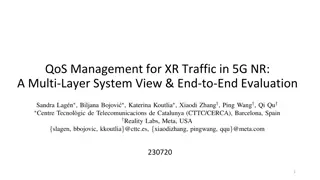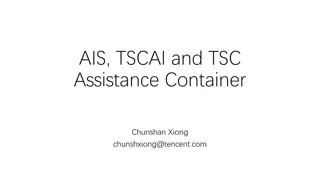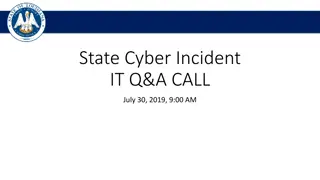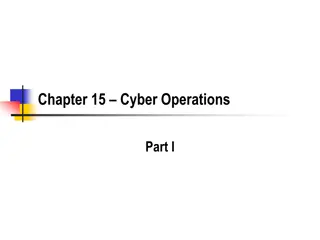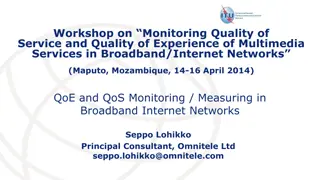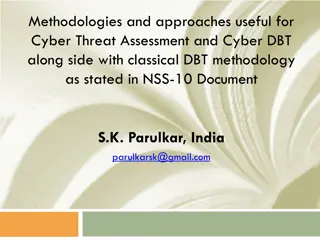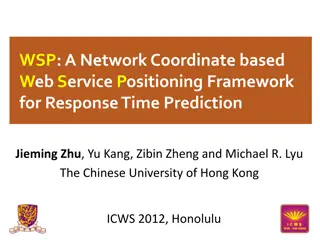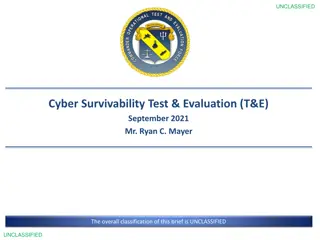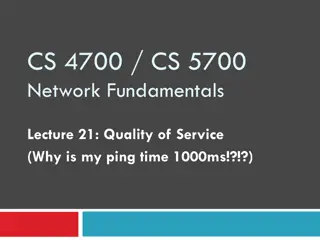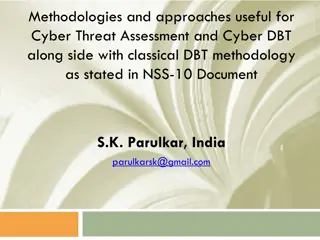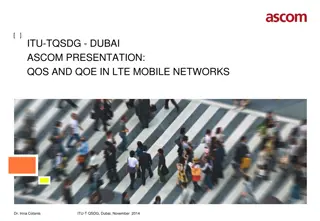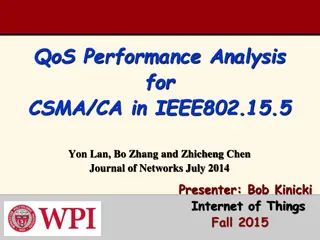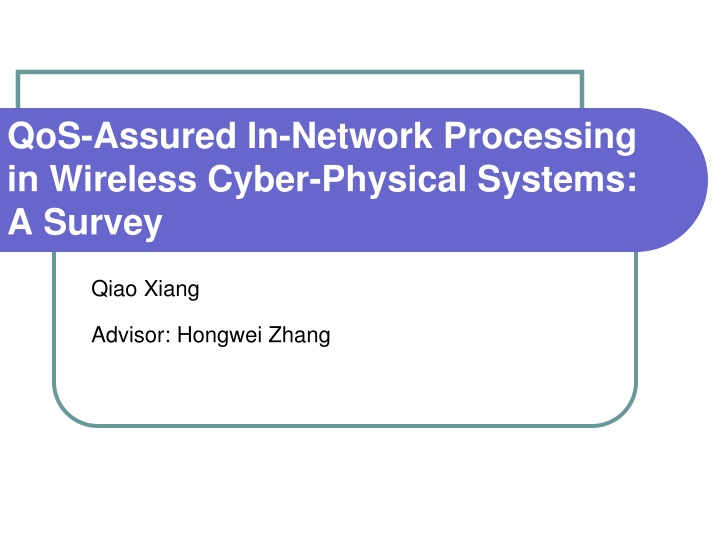
QoS-Assured In-Network Processing in Wireless Cyber-Physical Systems
This survey explores methods, challenges, and solutions for achieving Quality of Service in In-Network Processing within Wireless Cyber-Physical Systems. Topics covered include data aggregation, packet packing, network coding, and more.
Download Presentation

Please find below an Image/Link to download the presentation.
The content on the website is provided AS IS for your information and personal use only. It may not be sold, licensed, or shared on other websites without obtaining consent from the author. If you encounter any issues during the download, it is possible that the publisher has removed the file from their server.
You are allowed to download the files provided on this website for personal or commercial use, subject to the condition that they are used lawfully. All files are the property of their respective owners.
The content on the website is provided AS IS for your information and personal use only. It may not be sold, licensed, or shared on other websites without obtaining consent from the author.
E N D
Presentation Transcript
QoS-Assured In-Network Processing in Wireless Cyber-Physical Systems: A Survey Qiao Xiang Advisor: Hongwei Zhang
Outlines Introduction In-Network Processing Methods QoS-Assured INP in WCPS Open Issues Conclusion
Outlines Introduction In-Network Processing Methods QoS-Assured INP in WCPS Open Issues Conclusion
Introduction Wireless Sensor Networks: Highly Resource- (Energy-) and Environment- Constrained In-Network Processing: Reduce Traffic Flow Resource (Energy) Efficient Category: Application Independent Application Dependent Data Aggregation Packet Packing Network Coding Data Fusion Query Processing
From WSN to WCPS Wireless Cyber-Physical Systems: Close-Loop vs. Open-Loop INP in WCPS: More emphasis on Quality of Service e.g., latency and reliability
Outlines Introduction In-Network Processing Methods QoS-Assured INP in WCPS Open Issues Conclusion
In-Network Processing Methods Data Aggregation Packet Packing Network Coding Data Fusion Query Processing
Data Aggregation Aggregate/Compress Correlated Data Most common INP mechanism Different Design Goals: Energy Efficiency Collision Reduction Scalability Network Lifetime
Data Aggregation Current Research: How to build efficient aggregation structure Representative approaches: Chain structure Cluster structure Tree structure Structure free
Packet Packing Assemble small packets into larger ones (No aggregation) Data correlation is not important Current Research: Schedule small packets to transmit or wait. Approaches: Opportunistic, Pre-defined waiting time Greedy Drawbacks: No hard latency guarantee
Network Coding Make use of the broadcast nature of wireless communication Main Goal: improve throughput Current Research: Cooperation of random linear network coding and routing
Network Coding Inter-flow coding: COPE Only packets with different destinations can be coded together Intra-flow coding: MORE, Pacifier Only packets with the same destination get coded together Hybrid coding: First do inter-flow coding, then do intra-flow coding
Examples of Inter and Intra Flow Coding C P1, P4 P1, P2, P3, P4 A P1, P2, P3, P4 A B C D D B P3, P4 P1, P2 P2, P3 P1, P3 P3, P4
Data Fusion Main Goal: Assure data accuracy More complex than aggregation/compression Data is processed by sensors before the transmission Data can be further processed at intermediate sensors during the transmission Sensors roles are more flexible. Representative works: DFuse
Query Processing Main Goal: Data Accuracy and energy efficient Data is only collected when there is a query request. Requests are optimized before being sent to sensors. Depending on different query requests, data is processed during the transmission. Not every sensor need to response to a query request. Representative works: TAG, CAG, TinyDB
Outlines Introduction In-Network Processing Methods QoS-Assured INP in WCPS Open Issues Conclusion
QoS-Assured INP in WCPS Mission-Critical Real-Time WCPS Latency-Guaranteed INP Reliability-Guaranteed INP
Latency-Guaranteed INP Data Aggregation: Only Soft-Latency guarantee is provided End-to-End Latency One-hop Latency Feedback control Define rewards function Evenly divide the spare time Semi-Markov chain Define new metric
Latency-Guaranteed INP Packet Packing Only Soft-Latency guarantee is provided End-to-End Latency One-hop Latency Grouping packets Pre-defined packet size Opportunistic Feedback control
Latency-Guaranteed INP Network Coding Network Coding can improve average end-to-end delay Individual delay of each packet is still an unexplored area Data Fusion Latency constraints can be achieved by adjusting network density
Reliability-Guaranteed INP Data Aggregation, Data Fusion, and Query Processing Traffic load reduced Collision and Interferences reduced Reliability is assured Packet Packing Packet size is controlled to ensure the reliability Network Coding Similar to packet packing, coding degree can be controlled to ensure the reliability
Outlines Introduction In-Network Processing Methods QoS-Assured INP in WCPS Open Issues Conclusion
Open Issues Systematic Modeling and Complexity Analysis Joint Optimization of QoS and WCPS-specific INP Cooperation of Different INP Methods in WCPS Theoretical Foundations of Algorithm
Outlines Introduction In-Network Processing Methods QoS-Assured INP in WCPS Open Issues Conclusion

